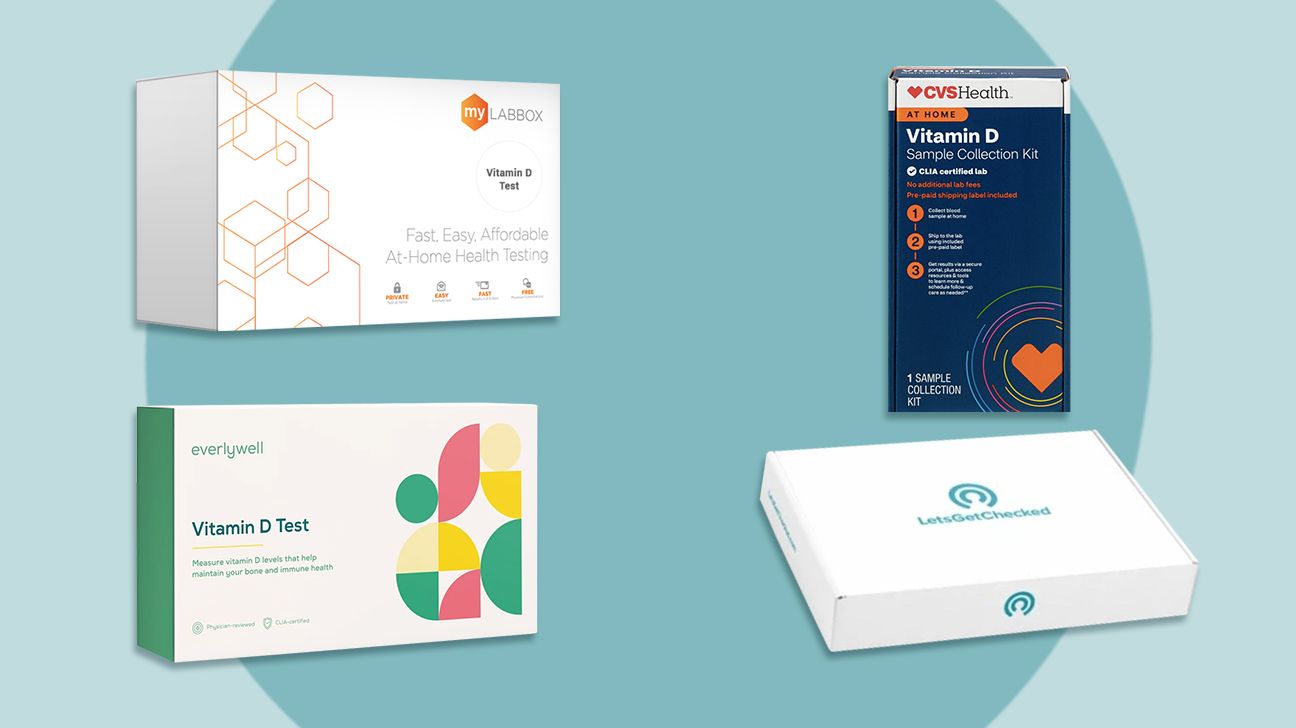We include products we think are useful for our readers. If you buy through links on this page, we may earn a small commission. Here’s our process.
Healthline only shows you brands and products that we stand behind.
Our team thoroughly researches and evaluates the recommendations we make on our site. To establish that the product manufacturers addressed safety and efficacy standards, we:- Evaluate ingredients and composition: Do they have the potential to cause harm?
- Fact-check all health claims: Do they align with the current body of scientific evidence?
- Assess the brand: Does it operate with integrity and adhere to industry best practices?
At-home vitamin D tests may provide insights into your health. When followed by a consultation with a doctor, it can be a first step in managing a common nutritional deficiency.
Vitamin D helps you maintain strong bones and muscles. But deficiencies are common among older adults, those with darker skin tones, people with liver or kidney disease, and folks following restrictive diets.
If you’re at risk of vitamin D deficiency or are worried about your levels, an at-home test may be a good first step. Here, we explain how the hydroxy-25 vitamin D test works, who should use it, and recommend the best options.
The most accurate measurement of your vitamin D levels is a 25-hydroxy vitamin D test. It measures your blood level of 25-OH vitamin D, or the form of D that is converted and used by your body.
Done through a blood draw in a doctor’s office or via a finger prick blood sample at part of an at-home kit, this test can determine whether your vitamin D levels are too high, too low, or adequate.
This test is also known by other names, including 25(OH) D, calcidiol, or cholecalciferol test. It can be an important indicator of vitamin D deficiency, which can lead to osteoporosis (bone weakness) and rickets (bone malformation).
The 25(OH)D test is particularly useful for individuals at risk of a deficiency, such as those with limited sun exposure, people who eat a vegan diet, or people with medical conditions that make it difficult for the body to absorb nutrients from food or to convert vitamin D into a usable form.
• 24/7 nurse support
We considered the following factors when determining which products should make our list:
- Company reputation: We selected tests that reputable companies offered. Furthermore, our internal vetting team thoroughly vetted each company based on its business practices.
- Lab certification: All the tests below are processed in
Clinical Laboratory Improvement Amendments (CLIA) certified facilities to ensure compliance with safety and quality standards. - Test methodology: During vetting, Healthline’s medical experts reviewed the methodology behind each test to ensure it’s based on sound science.
- Customer reviews: We chose tests that have mostly positive online ratings and paid close attention to mentions of overall value and ease of use.
A vitamin D test might be beneficial for:
- people who don’t get regular sun exposure
- those at risk for vitamin D deficiency
- people with dairy allergies or those who follow restrictive diets
- individuals who have low levels of other important nutrients, like magnesium (which plays a crucial role in vitamin D activation in the body)
- those with symptoms of a vitamin D deficiency
- people taking vitamin D supplements to check whether their vitamin D levels are improving
People who may be at a higher risk of deficiency include:
- older adults
- those with darker skin tones
- those who have undergone bariatric surgery
- people following restrictive diets
- people with certain conditions, including obesity, Crohn’s disease, and chronic liver or kidney disease
How often should I test my vitamin D levels?
Research suggests that it’s best to wait at least
If you’re concerned about your vitamin D or are at high risk for a deficiency, testing vitamin D
If you and your healthcare professional have determined that you would benefit from an at-home vitamin D test, there are some factors you’ll want to consider as you choose:
- Time: How fast do you need your results? What is the expected turnaround time from this company?
- Cost: How much does this test cost compared to your insurance copay at a lab? Do you have FSA/HSA funds you could use?
- Support: Will you be able to talk about your results with a qualified medical professional? It can be stressful to get lab results with no interpretation.
- Accreditation: Does this company work with a reputable lab, preferably accredited by laboratory accreditation agencies?
You can increase your vitamin D levels by:
- spending time in the sun (you need about 10 to 15 minutes a day in the sun without sun protection on 40% of your body)
- eating foods containing vitamin D
- taking supplements containing vitamin D
- To learn more about your test results: If you have test results and you’d like to understand them better, it’s a good time to reach out to a healthcare professional. They can help you interpret the results and determine the next steps.
- To discuss symptoms that may be affecting your daily life: If you’re experiencing symptoms like constant or increased tiredness, hair loss, slow wound healing, or chronic pain, it’s a good idea to contact a health professional. They can check your vitamin D levels with a blood test and help you rule out other causes of your symptoms.
- If changes to boost vitamin D haven’t seemed to help: If spending more time in the sun and increasing your dietary intake of vitamin D haven’t improved how you’re feeling, it’s worth talking with a healthcare professional.
You can check your vitamin D levels at home using an at-home test kit, which typically involves a simple finger prick blood sample. After collecting your sample, you can send it in for analysis.
These kits provide a convenient and accurate way to monitor vitamin D levels, especially for those at risk of deficiency.
Currently, there are no rapid tests for vitamin D. Vitamin D levels are typically measured through blood tests that require laboratory analysis, which can take a few days to process.
They can be. Look for tests with the highest levels of both sensitivity and specificity, says Dr. Philip Ngo, a pharmacist and drug information expert in Houston, Texas.
It’s also important to follow the test instructions carefully to reduce the chances of user error.
Consider confirming any result with a healthcare professional, nutritionist, or dietitian.
“It’s important to have another provider, in reading these tests and interpreting the results, to give you a formal diagnosis, versus you trying to wing it yourself and guessing at it,” Ngo said.
Vitamin D is an important micronutrient because it plays a large role in bone and immune system health. Many people with vitamin D deficiency don’t experience any symptoms. So, testing your vitamin D levels may help provide information about your health.
An at-home test is a convenient way to monitor your vitamin D levels. Note that there isn’t much research available on the benefits of screening for vitamin D deficiency.
Before purchasing a test, it’s important to speak with a healthcare professional to determine whether testing is needed and, if so, how often. A healthcare professional can also recommend any at-home testing options and advise you on your results and treatment for a vitamin D deficiency.

















